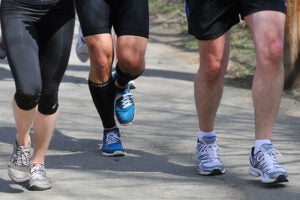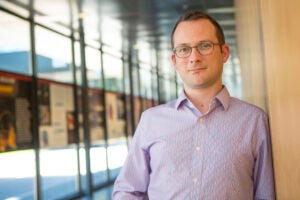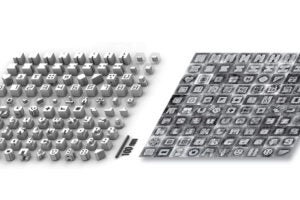Tag: Nature
-
Nation & World
Microbial manufacturing
Emily Balskus and a team of researchers untangled how soil bacteria are able to manufacture streptozotocin, an antibiotic and anti-cancer compound.
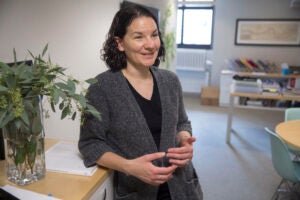
-
Nation & World
Examining aftershocks with AI
Sparked by a suggestion from researchers at Google, Harvard scientists are using artificial intelligence technology to analyze a database of earthquakes from around the world in an effort to predict where aftershocks might occur. Using deep-learning algorithms, they developed a system that, while still imprecise, was able to forecast aftershocks significantly better than random assignment.

-
Nation & World
Game-changing game changes
Games that can change based on players’ actions help Harvard’s Martin Nowak and his fellow researchers to understand the evolution of cooperation.
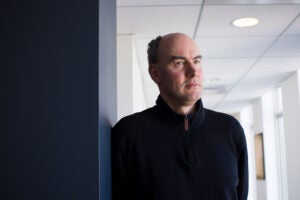
-
Nation & World
Material interests
Susan Kapuscinski Gaylord discusses the process behind her handmade books nested in cradles of wood at Harvard’s Arnold Arboretum.
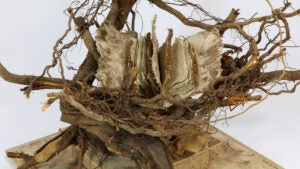
-
Nation & World
Researchers create quantum calculator
Researchers have developed a special type of quantum computer, known as a quantum simulator, that is programmed by capturing super-cooled rubidium atoms with lasers and arranging them in a specific order, then allowing quantum mechanics to do the necessary calculations.
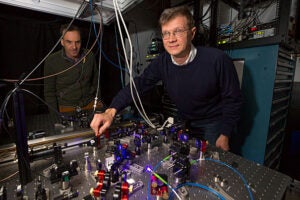
-
Nation & World
A step forward in DNA base editing
Scientists at Harvard University and the Broad Institute have developed a new class of DNA base editor that can repair the type of mutations that account for half of human disease-associated point mutations. These single-letter mutations are associated with disorders ranging from genetic blindness to sickle-cell anemia to metabolic disorders to cystic fibrosis.
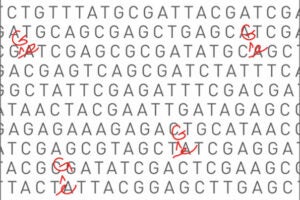
-
Nation & World
Figuring out superconductors
A team of physicists has taken a crucial step toward understanding superconductors by creating a quantum antiferromagnet from an ultracold gas of hundreds of lithium atoms.
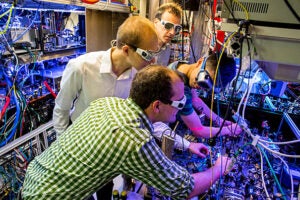
-
Nation & World
Mom, dad set in their ways? Maybe it’s not their fault
Research led by Hopi Hoekstra breaks new ground by uncovering links between the activity of specific genes and parenting differences across species
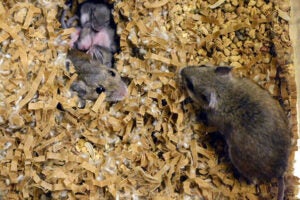
-
Nation & World
Catalyzing discovery
In a trio of studies published earlier this month, researchers have shown that the process of catalysis is more dynamic than previously imagined, and that molecular forces can vastly influence the process.
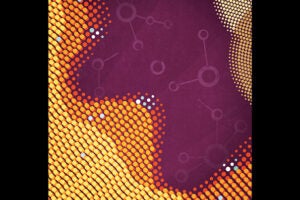
-
Nation & World
What a freshman sees
For College student Jasper Johnston ’20, discovering Harvard is a shared experience through Instagram.
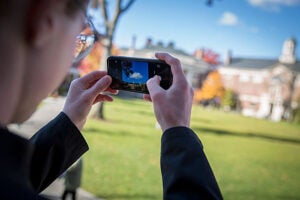
-
Nation & World
A new platform for discovering antibiotics
Harvard chemists have created a platform for discovering antibiotics that they hope will shorten the time and difficulty involved in measuring their effectiveness, even as the body’s resistance to current antibiotics is rising.
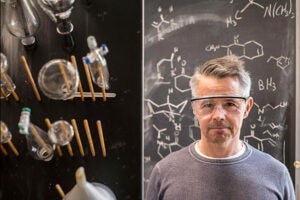
-
Nation & World
Big gains in better chewing
According to a new Harvard study, our ancestors between 2 and 3 million years ago started to spend far less time and effort chewing by adding meat to their diets and using stone tools to process food.
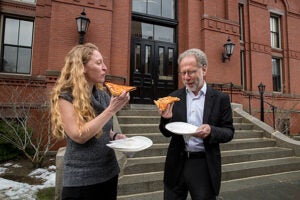
-
Nation & World
A key urban intersection
Harvard researchers are pushing for a closer look at links between green spaces and health in cities.
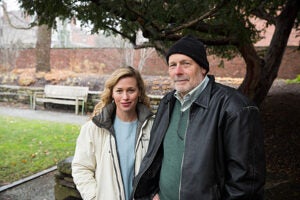
-
Nation & World
Harvard rolls out plan for the future
The Harvard Sustainability Plan, released today, sets a holistic vision and clear priorities for how the University will move toward an even healthier, more sustainable campus community. The five-year operational plan targets reductions in energy, water, and waste while also focusing on sustainable operations, culture change, and human health.
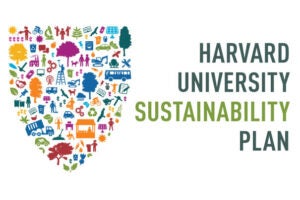
-
Nation & World
New way to regrow human corneas
Harvard-affiliated researchers have identified a way to enhance regrowth of human corneal tissue to restore vision, using a molecule that acts as a marker for hard-to-find limbal stem cells.
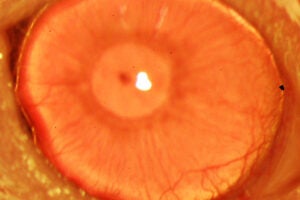
-
Nation & World
Strategy for diabetes treatment
Harvard scientists have discovered a compound that inhibits insulin-degrading enzyme from breaking down insulin in the body.
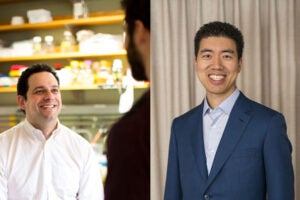
-
Nation & World
Rising CO2 poses significant threat to human nutrition
At the elevated levels of atmospheric CO2 anticipated by around 2050, crops that provide a large share of the global population with most of its dietary zinc and iron will have significantly reduced concentrations of those nutrients, according to a new study led by Harvard School of Public Health.
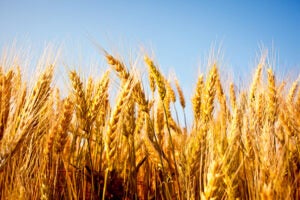
-
Nation & World
Neanderthals’ DNA legacy linked to modern ailments
Remnants of Neanderthal DNA in modern humans are associated with genes affecting type 2 diabetes, Crohn’s disease, lupus, biliary cirrhosis, and smoking behavior. They also concentrate in genes that influence skin and hair characteristics. At the same time, Neanderthal DNA is conspicuously low in regions of the X chromosome and testes-specific genes.
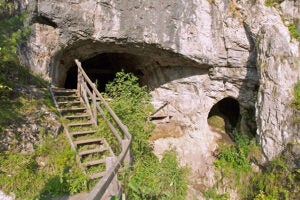
-
Nation & World
Your gut’s what you eat, too
A new Harvard study shows that, in as little as a day, diet can alter the population of microbes in the gut – particularly those that tolerate bile – as well as the types of genes expressed by gut bacteria.
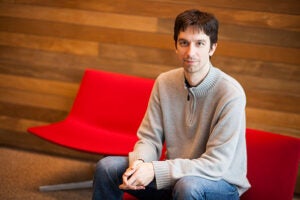
-
Nation & World
Persian inspiration
Farrin Abbas Zadeh, a visiting fellow in the Department of Near Eastern Languages and Civilizations, has mounted an art show called “A Window to Heaven: Motifs of Nature in Life and Dream.”
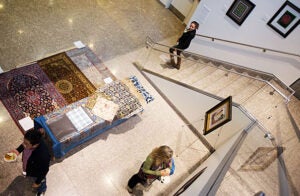
-
Nation & World
Seeing light in a new way
Working with colleagues at the Harvard-MIT Center for Ultracold Atoms, Professor of Physics Mikhail Lukin and post-doctoral fellow Ofer Firstenberg have managed to coax photons into binding together to form molecules — a state of matter that, until recently, had been purely theoretical.
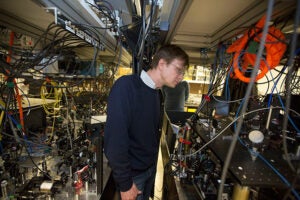
-
Nation & World
Loeb House garden: Colorful blooms of Elizabeth Gray
Elizabeth Gray, senior associate secretary to the University, has tended the Loeb House garden in Harvard Yard since 1985.
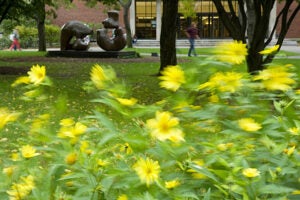
-
Nation & World
Efficiency in the forest
Spurred by increasing levels of atmospheric carbon dioxide, forests over the past two decades have become dramatically more efficient in how they use water, a Harvard study has found.
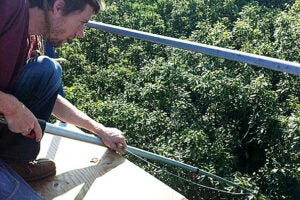
-
Nation & World
Right down the middle, explained
The ability to throw an object with great speed and accuracy is a uniquely human adaptation, one that Harvard researchers say played a key role in our evolution.
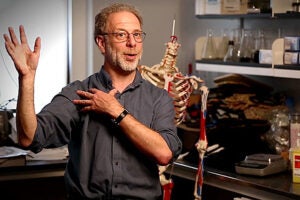
-
Nation & World
Warmth across 600 years
Harvard researchers are adding nuance to our understanding of how modern and historical temperatures compare.
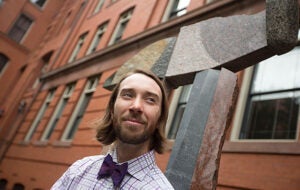
-
Nation & World
Birth of new cardiac cells
In a study from Harvard-affiliated Brigham and Women’s Hospital, researchers used a novel method to identify the new heart cells and describe their origins.
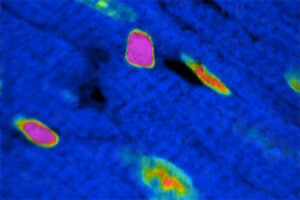
-
Nation & World
The sounds of nature, as music
The Woodberry Poetry Room hosts an evening of forest recordings and verse about nature, twinning sounds with wordplay.
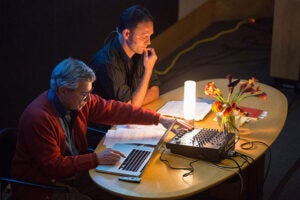
-
Nation & World
Stem cells need recovery time, too
A new study describes the mechanism behind impaired muscle repair during aging and a strategy that may help rejuvenate aging tissue by manipulating the environment in which muscle stem cells reside.
